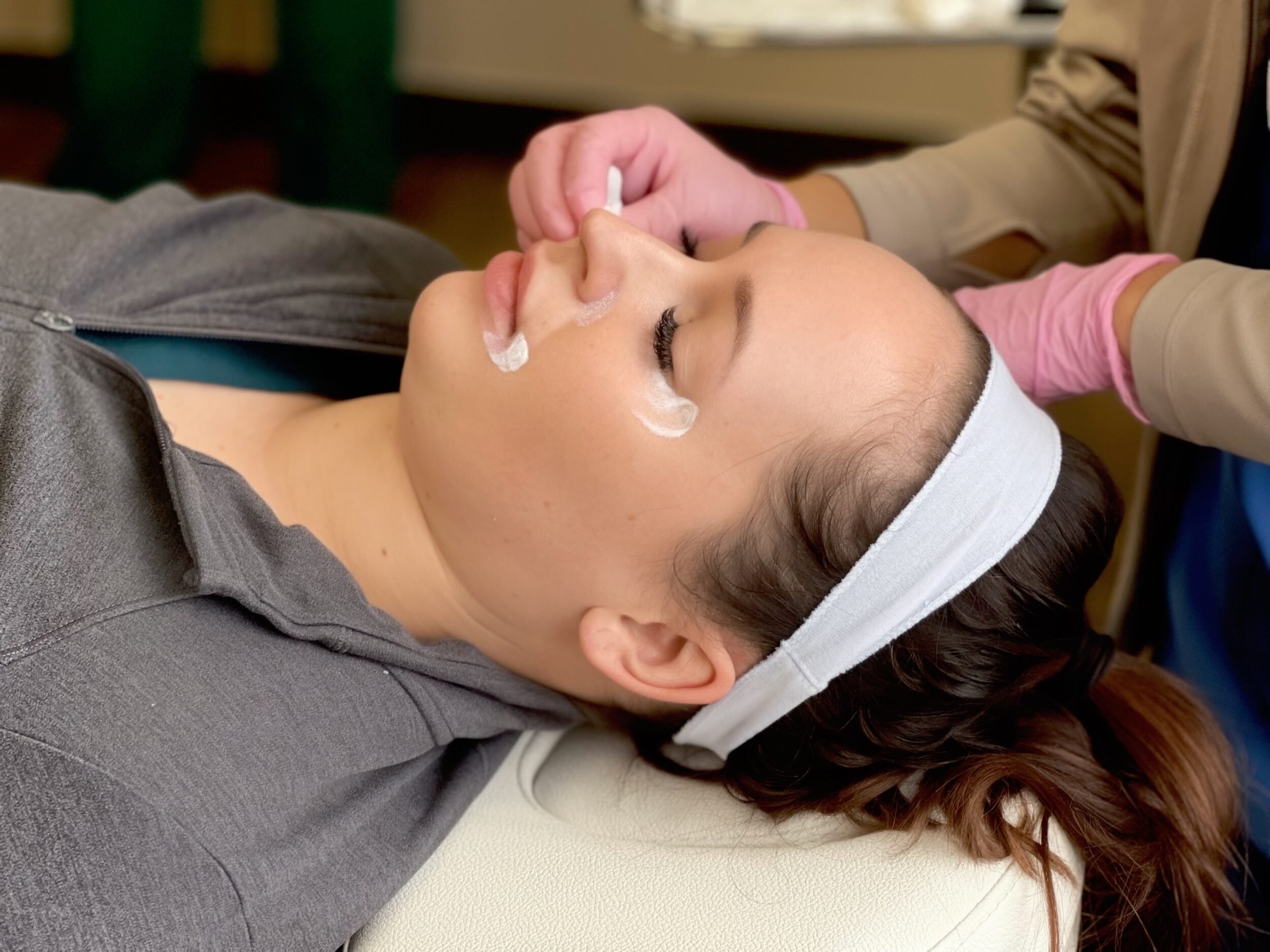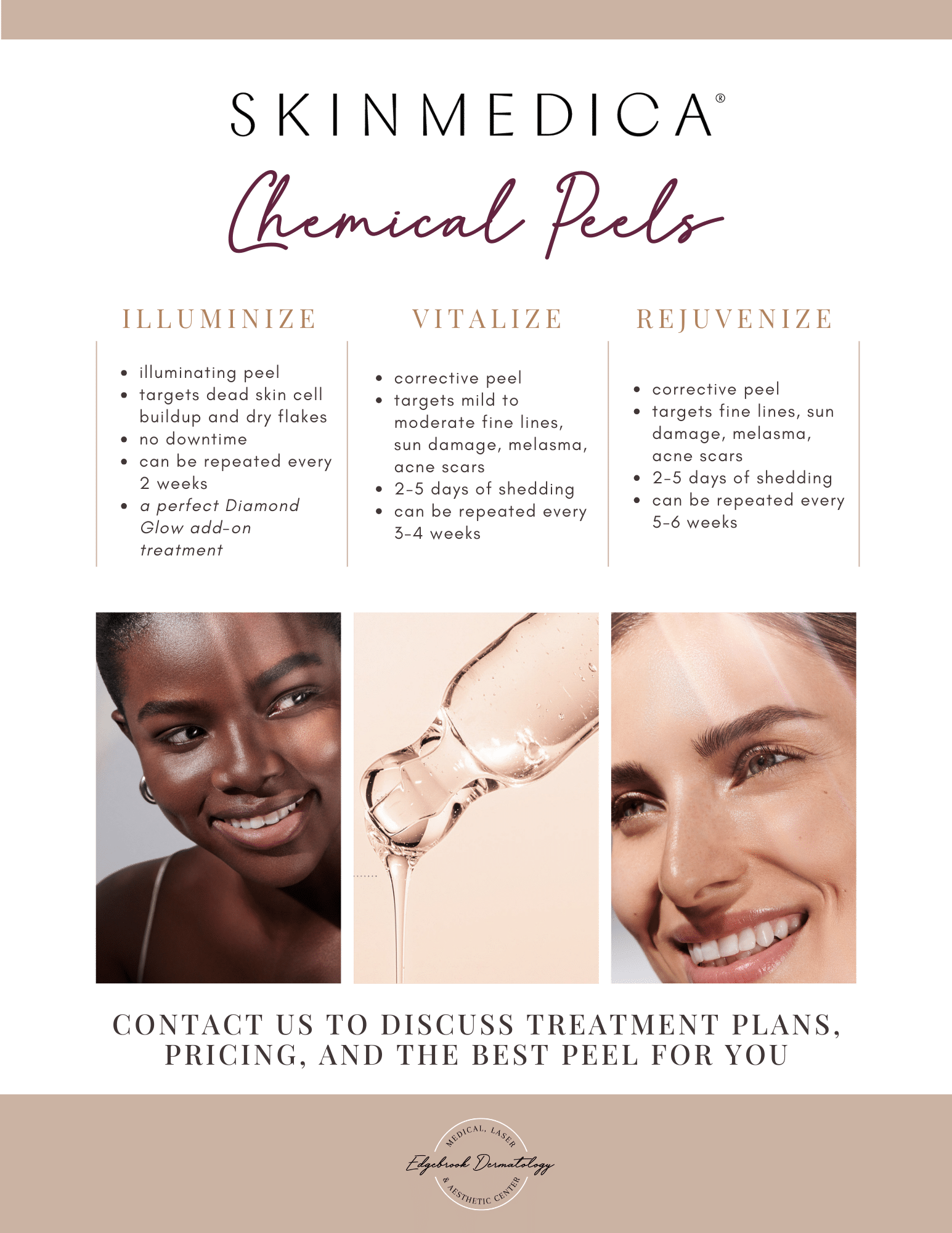Chemical peels are one of the most popular treatments for improving the appearance of the skin. But what exactly is a chemical peel? What are the different types of peels? How do you know if you're a good candidate for a peel? Here's your complete guide.

What Is a Chemical Peel?
A chemical peel is a cosmetic treatment (typically administered by a dermatologist or licensed esthetician) that uses a chemically-induced exfoliation process to improve the appearance of the skin.
Chemical peels can be classified into three types:
Superficial peels: A light peel that uses gentle acids to exfoliate the top layer of the skin. A peel like this helps to reduce fine lines, wrinkles, and sun damage.
Medium peels: A medium peel that uses stronger acids to penetrate the middle layers of the skin. Peels like this one help to improve moderate to severe sun damage, wrinkles, and scarring.
Deep peels: A deep peel that uses the most potent acids to reach the deepest layers of the skin. This peel improves the appearance of severe sun damage, wrinkles, and scarring. It can also serve to treat precancerous skin conditions.
Chemical peels:
- Improve your skin's texture by reducing the appearance of scars, blemishes, and wrinkles.
- Can help to even out your skin tone by reducing the appearance of dark spots and hyperpigmentation.
- Help to increase collagen production, which in turn can help to plump up the skin and reduce the appearance of fine lines and wrinkles.
- Boost new cell growth, making your skin look more youthful.
- Can be customized to target specific concerns such as acne, sun damage, or fine lines and wrinkles.
- Are relatively quick and easy to receive compared to other treatments such as laser therapy or surgery.
- Have little-to-no downtime, meaning you can quickly resume your normal activities.
- Are relatively affordable compared to other cosmetic services.
A chemical peel can improve the appearance of the skin by reducing wrinkles, acne scars, and sun damage. It can also stimulate collagen production, making the skin look firmer and more youthful.
What Can a Chemical Peel Treat?
A chemical peel is a skin-resurfacing treatment that uses a chemical solution to remove the top layer of dead skin cells. They can treat and help improve:
- Hyperpigmentation
- Dark spots
- Uneven skin tone
- Wrinkles and fine lines
- Acne and acne scars
- Melasma
- Age spots

Am I a Good Candidate for Chemical Peels?
Generally, good candidates for chemical peels are those with particular skin concerns, such as acne, scarring, uneven skin tone, or fine lines and wrinkles. If you have one or more of these concerns and you're looking for a way to improve your skin's appearance, a chemical peel may be a good option for you.
The best way to find out if a chemical peel is right for you is to consult a dermatologist. They can assess your skin and give you more information on whether or not this type of treatment would be effective.
What Happens During a Chemical Peel Treatment?
The length of a chemical peel varies depending on its depth. Preparation of the skin begins with the appointment. Dermatologists will cleanse your skin and cover your hair and eyes before applying the chemical solution. An application tool such as a brush or sponge will be used to apply the solution to your skin. Glycolic or salicylic acids are contained in this solution. You may feel a slight burning sensation as the solution sits on your skin.
A dermatologist will neutralize and remove the solution after leaving it on your skin for a specified period. The compress will soothe your skin as soon as the compress is applied. You might be instructed to take pain medication if you had a deep peel.
Chemical Peel Recovery and Aftercare
After a chemical peel, the skin will be red and sensitive. It is crucial to protect the skin from the sun and avoid activities that irritate the skin. The skin will also peel and flake for a few days after the treatment.
It is essential to follow the aftercare instructions provided by your dermatologist. These instructions will help you to recover quickly and to avoid any complications.
Following a chemical peel, it is advisable to:
- Make sure you listen to your chemical peel provider
- Apply a lukewarm washcloth to your skin
- Protect yourself from the sun with sunscreen
- Choose products that are gentle on your skin
- Keep your skin moisturized
How Often Should I Get a Chemical Peel?
It all depends on your goals and your skin type. If you have sensitive skin, you may only be able to tolerate a chemical peel every few months. However, if you have tough, resilient skin, you may be able to get a chemical peel every month or so. Ultimately, it's best to speak with a skincare specialist to figure out a peel schedule that's right for you.

Contact Edgebrook Dermatology Today
If you are searching for a board-certified dermatologist in the Rockford area, look no further than Edgebrook Dermatology. Our team of experts provides comprehensive dermatologic care for patients of all ages. We offer a full range of services, from medical dermatology to cosmetic dermatology. If you would like to schedule an appointment, please contact our office today at 815-229-9333. We look forward to meeting you and helping you achieve optimal skin health.
